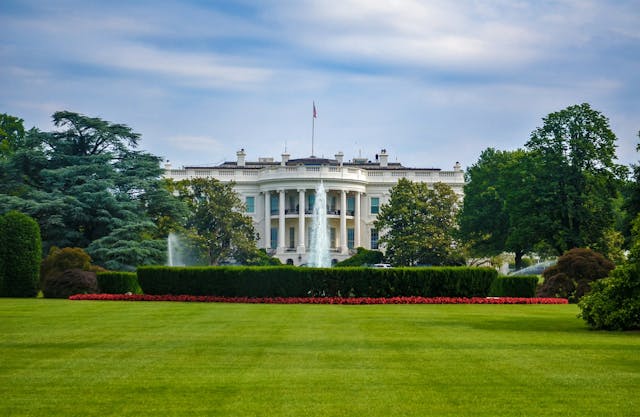Mayoral Candidate Cory Briggs Wants Immediate Halt to Phony YIMBY Proposals To Relax Rules on High-Density Development

It’s like déjà vu all over again: City Hall insiders asking politicians to leap before they look.
This time it’s proposals backed by the YIMBY (“yes in my back yard”) movement to lift height limits and eliminate parking requirements in order to promote even more high-density residential development, beyond what the law already allows.
Due consideration has not been given to the YIMBY proposals’ potential negative consequences, and there certainly has not been sufficient community input. No serious thought has been given to how the proposals will be implemented, how much they will deteriorate the quality of life in affected neighborhoods, how much it will cost taxpayers to maintain their quality of life, or even whether the objectives are realistic.
For example, how much more time each day will existing residents in crowded neighborhoods have to waste competing with new residents for already-scarce parking spaces? How much more air pollution will their vehicles spew as they hunt for parking? Does the public transit necessary to alleviate these problems exist in affected neighborhoods? If not, how long will residents have to wait for it and how much will taxpayers have to shell out for it? Where will that money come from, and what services will the public have to give up along the way?
Because the YIMBY insiders do not have good answers to the long list of questions their proposals raise, they are rushing politicians to make a decision before anyone fully understands what’s happening, what the consequences will be, or who will pay for it.
Whatever “crisis” the insiders claim their proposals address will pale in comparison to the real crisis they’ll create with their thoroughly unstudied proposals.
We must stop, look, and listen before plunging into this morass.
There are well-intentioned San Diegans working earnestly to make housing more accessible, make public transit more available, and protect the environment. But these efforts are being hijacked by wealthy special interests who have a different agenda, aided by politicians who aspire to higher office more than they aspire to higher public service.
Every San Diegan needs to understand that what the pending YIMBY proposals will achieve on their current course is high-density development not in the insiders’ back yards, but in everyone else’s, with no improvement to our overall quality of life.
HOW SHOULD WE PROCEED?
To protect San Diego’s residents, environment, and quality of life from YIMBY attacks, we need to suspend consideration of proposals to lift height limits in residential zones (i.e., above what the law currently allows) and eliminate parking requirements until:
* All public costs and environmental impacts have been throughly studied and disclosed.
* The city has circulated a detailed response plan to prevent any harm to neighborhoods and their residents.
* The city has secured sufficient funding to cover the public costs of the response plan.
* The public has had a reasonable opportunity to review, understand, and give feedback on the proposals and the response plan.
WHY DO WE NEED THE STUDY AND RESPONSE PLAN?
San Diego neighborhoods face unprecedented pressure from politicians, developers, special interests, and lobbyists pushing to eliminate height limits, parking requirements, and other health, safety, and quality-of-life laws in order to increase density along public-transit lines – a concept known as “transit-oriented development” – except in coastal communities. They suggest their proposals will reduce both the cost of housing and the amount of greenhouse gases (GHGs) generated by vehicles. To put their vision into action, they have adopted the strategy of calling themselves “YIMBYs” and labeling everyone else “NIMBYs” (“not in my back yard”). Pro-development YIMBYs are actively urging state officials to impose broad mandates on local governments, rather than adopting a neighborhood-by-neighborhood approach, and top state officials appear receptive to the idea.
I reject any attempt to couch the debate over access to housing and environmental protection as a fight against NIMBYs.
I strongly disagree with the divisive nature of the debate as currently framed by the YIMBYs. Calling people names just because they disagree with you is not how grown-ups find solutions to urgent problems.
The challenges we face to make housing more accessible and curb GHG emissions are too difficult for an “either/or,” “with-us-or-against-us” approach.
We need to have an adult conversation about a variety of potential solutions involving the public and private sectors (e.g., land-value recapture, eliminating in-lieu fees, raising on-site affordability requirements, and cutting unnecessary red tape in the approval process). But we must be realistic – and most importantly we must be united – as we search for responsible solutions to these challenges.
As an environmental attorney, I have been fighting for years to protect the public from runaway development because it never provides a commensurate increase in infrastructure and other public amenities and services; the true costs are always passed off to neighbors and taxpayers.
I have also fought developments that did not reduce their GHGs as much as possible. I have been, and remain, a strong supporter of transit-oriented development. In fact, I represented affordable-housing advocates in their successful lawsuit against SANDAG a few years ago because its plan both worsened air pollution and didn’t do enough to reduce GHGs.
I was also one of the lawyers who won the Sierra Club’s first lawsuit against the County of San Diego because its plan to reduce GHGs had no teeth. I have represented other clients in similar lawsuits to protect the environment and our quality of life.
Unfortunately, the YIMBY proposals being pushed today to increase density along transit lines suffer from at least six flaws:
* First, what they will ultimately accomplish is a massive transfer of wealth from residents to corporate investors and absentee landlords. YIMBYs have curried favor in Sacramento and persuaded politicians to take away local control, and closer to home they’re infiltrating our community planning groups with candidates they’ve trained through developer-sponsored programs. One of the key components of their proposals is allowing developers to build a large number of high-rise luxury homes – homes that most locals could never afford – while providing a very small number of affordable homes. Like so many other development proposals I’ve scrutinized over the years, the YIMBY proposals I’ve seen never require developers to pay for all the infrastructure and amenities necessary to make the neighborhood as comfortable and enjoyable for residents as it was before the new development; of course, the government never has enough money to make this happen. After the YIMBYs have helped developers take over your back yard, they’ll hand over your wealth to developers too. In the end, the true costs are effectively externalized onto residents through a diminution in their quality of life and onto homeowners through a loss of home values.
* Second, while the legal basis for the state imposing increased-density mandates is dubious, the practical implications of doing so must not be overlooked. Mandates would essentially dismantle our community-planning process, which gives residents a meaningful opportunity to influence the future of their neighborhoods. Instead, developers would decide how and when neighborhoods change; residents would no longer have any control over their neighborhoods’ destinies. Developers would be encouraged to transform suburban communities into urban high-rise communities, and residents would be helpless to stop it. I have heard many good ideas from community members wanting to make their neighborhoods greener and more accessible. Their ideas deserve an improved community-planning process, not a weaker one.
* Third, recent City maps of current and proposed transit lines suggest that most if not all neighborhoods in the City of San Diego (except those along the coast) would face significant density increases. Meanwhile, the City’s capital-improvement program (CIP) and development-mitigation funds still do not have enough money to deliver the infrastructure, amenities, and services currently needed to maintain our neighborhoods’ quality of life, despite years of promises by developers and politicians. The CIP alone suffers from a funding shortfall in excess of $1.8 billion, according to a recent report by the City’s independent budget analyst (see IBA Report no. 19-03). If the City cannot afford to honor past commitments, there is no reason to expect it to satisfy neighborhoods’ additional needs for amenities and infrastructure triggered by the new development.
* Fourth, impartial expert and academic studies confirm that increasing residential density does not result in a material difference in family housing costs. Economists at the Federal Reserve Board and UCLA concluded just last year that a 20% increase in density in large cities like San Diego would drive prices down by less than 2% (report available at www.federalreserve.gov/econres/feds/files/2018035pap.pdf). More recently, a Ph.D. researcher at MIT found that Chicago’s experiment with relaxing parking requirements and other zoning rules as a way to reduce housing costs backfired, causing higher prices with no additional new housing construction (see Y. Freemark, “Upzoning Chicago,” Urban Affairs Rev. 2019). “Build, baby, build!” is not a recipe for success if the goal is reducing housing costs. It will make no dent in the cost of housing – and may even make the problem worse – while increasing the number of luxury condos owned by corporate investors and absentee landlords.
* Fifth, there is the serious economic-justice problem of gentrification, which has a variety of negative consequences that the proposals ignore. Too many promise a small number of new affordable units in exchange for tearing down existing homes and replacing them with a large number of luxury high-rises priced beyond reach for even the hardest-working San Diegans. How are they helped by a market that makes it tougher for them to buy a home? What about the families who lose their homes to the new development? Where do they go in a city with no system to make sure they find comparable housing without major disruption to their livelihoods? And what are we doing to make sure developers do not unfairly target lower-income neighborhoods, where land prices tend to be lower? Overall, are we lifting people up or pushing them out? We will never find workable solutions to the problems we ignore.
* And last but not least, “transit-oriented development” without the necessary public transit leaves neighborhoods with nothing but development. According to the San Diego Union-Tribune on February 16, 2019, SANDAG has “no viable blueprint to meet state-mandated rules to limit greenhouse gases from cars and truck trips.” Until there is a real plan to deliver the public transit on which the new densification proposals are predicated, the only beneficiaries of more development will be developers, their lobbyists, and the politicians addicted to their campaign donations. The real losers will be the people who already live here, those aspiring homeowners who’ve been falsely promised opportunities to climb the social ladder, and the environment.
We can and should do better because San Diegans deserve solutions that improve their lives, and I will be making this a central issue in my campaign. The comments here are intended to draw attention to an immediate problem at City Hall so that we do not blindly rush into a mistake that ultimately hurts our efforts to improve access to housing and protect our environment.
Cory Briggs is a candidate for Mayor of San Diego in 2020. You can learn more about his work as a lawyer at www.briggslawcorp.com.



